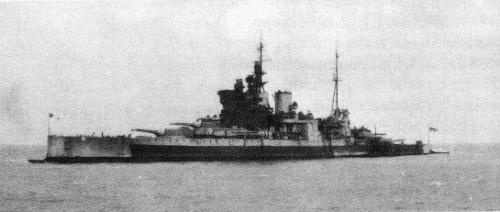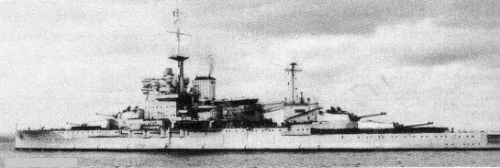
NAVYPEDIA
 Support the project with paypal
Support the project with paypal
Photo
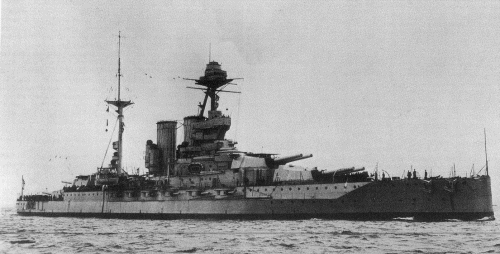
Malaya 1920
Ships
| Name | No | Yard No | Builder | Laid down | Launched | Comp | Fate |
|---|---|---|---|---|---|---|---|
| Queen Elizabeth | 10, 97, 00 | Portsmouth DYd | 21.10.1912 | 16.10.1913 | 1.1915 | sold for BU 3.1948 | |
| Warspite | 57, A9, 12, 03 | Devonport DYd | 31.10.1912 | 26.11.1913 | 3.1915 | sold for BU 7.1946 | |
| Barham | 97, 10, 34, 04 | 424 | John Brown, Clydebank | 24.2.1913 | 31.10.1914 | 10.1915 | sunk 25.11.1941 |
| Valiant | 34, A6, 43, 02 | 497 | Fairfield, Govan | 31.1.1913 | 4.11.1914 | 2.1916 | sold for BU 3.1948 |
| Malaya | 3A, 84, 06, 01 | 867 | Armstrong, Elswick | 20.10.1913 | 18.3.1915 | 2.1916 | sold for BU 2.1948 |
Technical data
| Data variant | as completed | Warspite, 1937 modernization | Valiant, Queen Elizabet, 1939-1941 modernization |
|---|---|---|---|
| Displacement standard, t | --- | ||
| Displacement normal, t | 27500 |
||
| Displacement full, t | 31500 |
36450 (including 815t of water protection) |
Valiant: 36513 (including 815t of water protection) Queen Elizabeth: 38450 (as in 1944) |
| Length, m | 196.8 |
196.8 |
196.8 |
| Breadth, m | 27.6 |
31.7 |
31.7 |
| Draught, m | 8.80 mean |
10.1 deep load |
Valiant: 10.0 deep Queen Elizabeth: 10.5 deep (as in 1944) |
| No of shafts | 4 |
4 |
4 |
| Machinery | Barham, Valiant: 4 Brown-Curtis steam turbines, 24 Yarrow boilers Malaya, Queen Elizabeth, Warspite: 4 Parsons steam turbines, 24 Babcock & Wilcox boilers |
4 sets Parsons geared steam turbines, 6 Admiralty 3-drum boilers |
4 sets Parsons geared steam turbines, 8 Admiralty 3-drum boilers |
| Power, h. p. | 56000 |
80000 |
80000 |
| Max speed, kts | 23 |
23.5 |
23.5 |
| Fuel, t | 3400 oil |
3501 oil |
Valiant: 3393 oil Queen Elizabeth: 3366 oil |
| Endurance, nm(kts) | 4500(10) | 14300(10) | 13500(10) |
| Armour, mm | main belt: 330 - 102, upper belt: 152, bulkheads: 152 - 102, turrets: 330 (face) - 279 (sides) - 127 (roof), barbettes: 254 - 178 (over main deck) - 152 - 102 (under main deck), casemates: 152, main deck: 76 (slopes) - 25 (flat), upper deck: 51 - 32, casemate roof: 25, longitudinal bulkhead: 51, CT: 280 |
main belt: 330 - 102, upper belt: 152, bulkheads: 152 - 102, turrets: 330 (face) - 279 (sides) - 127 (roof), barbettes: 254 - 178 (over main deck) - 152 - 102 (under main deck), casemates: 152 - 51, main deck: 76 (slopes) - 25 (flat) - 127 (over magazines) - 89 (over machinery), upper deck forward of citadel: 79, casemate roof: 25, longitudinal bulkhead: 51, CT: 76 - 51 |
main belt: 330 - 102, upper belt: 152, bulkheads: 152 - 102, turrets: 330 (face) - 279 (sides) - 127 (roof), barbettes: 254 - 178 (over main deck) - 152 - 102 (under main deck), AA guns: 51 - 25, main deck: 76 (slopes) - 25 (flat) - 127 (over magazines) - 63 (over machinery), upper deck forward of citadel: 83 - 70, longitudinal bulkhead: 51, CT: 76 - 51 |
| Armament | Queen Elizabeth: 4 x 2 - 381/42 BL Mk I, 16 x 1 - 152/45 BL Mk XII, 2 x 1 - 76/45 20cwt QF Mk I, 4 x 1 - 47/40 3pdr Hotchkiss Mk I, 4 - 533 TT (beam, 20) others: 4 x 2 - 381/42 BL Mk I, 14 x 1 - 152/45 BL Mk XII, 2 x 1 - 76/45 20cwt QF Mk I, 4 x 1 - 47/40 3pdr Hotchkiss Mk I, 4 - 533 TT (beam, 20) |
4 x 2 - 381/42 BL Mk I, 8 x 1 - 152/45 BL Mk XII, 4 x 2 - 102/45 QF Mk XVI, 4 x 8 - 40/39 2pdr QF Mk VIII, 4 x 4 - 12.7/62, 1 catapult D-II-H, 2 seaplanes (Osprey, Seal, Shark, Walrus, Swordfish, Seafox) |
Queen Elizabeth: 4 x 2 - 381/42 BL Mk I, 10 x 2 - 114/45 QF Mk I/III (3 Mk I + 7 Mk III), 4 x 8 - 40/39 2pdr QF Mk VIII, 4 x 4 - 12.7/62, 1 catapult D-III-H, 2 seaplanes (Walrus, Swordfish, Seafox) Valiant: 4 x 2 - 381/42 BL Mk I, 10 x 2 - 114/45 QF Mk I/III (5 Mk I + 5 Mk III), 4 x 8 - 40/39 2pdr QF Mk VIII, 4 x 4 - 12.7/62, 1 catapult D-III-H, 2 seaplanes (Walrus, Swordfish, Seafox) |
| Electronic equipment | --- | --- | Queen Elizabeth: type 279, type 284, 4x type 285 radars |
| Complement | 925 - 951 |
925 - 951 |
925 - 951 |
Standard scale images

Barham 1941
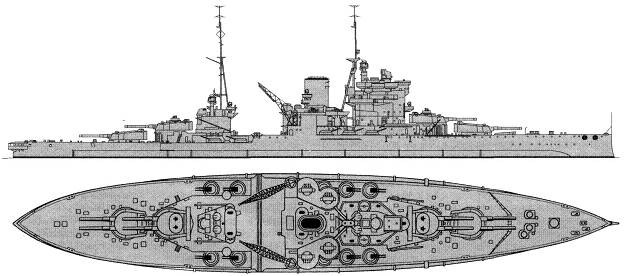
Queen Elizabeth 1941

Warspite 1942
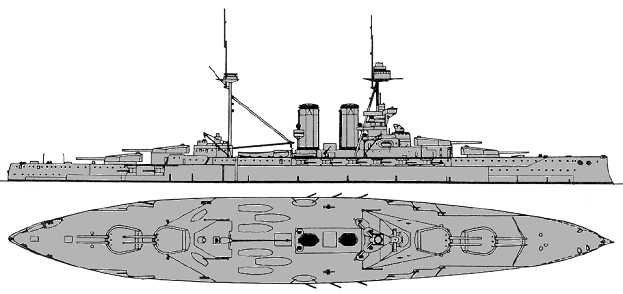
Queen Elizabeth 1915

Barham 1919

Malaya 1937
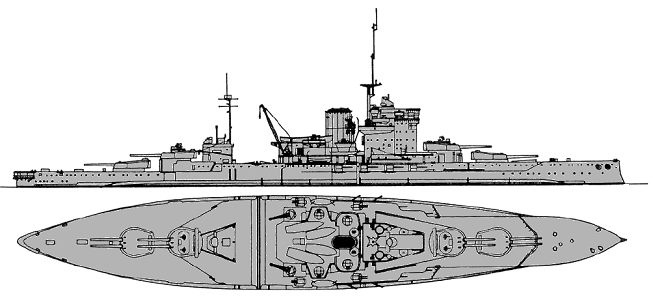
Warspite 1939

Barham 1940
Graphics
Project history Under the 1912 Programme three battleships and a batllecruiser were planned. Originally intended to be improved Iron Duke, growing unease about rumours that Germany wa
Under the 1912 Programme three battleships and a batllecruiser were planned. Originally intended to be improved Iron Duke, growing unease about rumours that Germany was planning an increase in calibre plus the certainty that Japanese and American dreadnoughts were being armed with 356mm guns, suggested that the new ships should be up-gunned. The gunmakers, the Elswick Ordnance Company, assured the Admiralty that a 381mm gun, firing a 872kg shell, was feasible. Because no 381mm gun had yet been made it would be necessary to start the ships with no certainty that the new gun would be successful, but the Director of Naval Ordnance had no doubts at all. The only concession which Elswick could make was to hurry one gun 4 months ahead of the others, to allow proof-firing and the preparation of range tables in time for the lead ship. In the event DNO`s confidence was more than justified as the 381mm/42cal Mk.I proved even more accurate than the 343mm Mk.V, with the same long barrel-life. What was more important was its greater hitting power and range, which promised to give the Royal Navy a comfortable margin for a few years. New designs were hurriedly prepared, initially for a five-turret, 21kts ship similar to the Iron Duke in layout. It was soon realised, however, that a reduction of one turret would still give a broadside of more than 6.8t, as against 6.4t in the Iron Duke. The space thus saved could be used for additional boilers to give a speed of 24-25kts. War College studies had shown that a fast wing to the battleflcet would be far more effective than a force of battlecruisers. To achieve 25kts on 27,000t would be impossible if the ship were to be coal-fired, but the greater thermal efficiency of oil would solve the problem and at the same time reduce weight. The only practical objection was, of course, thai oil fuel was imported from the Middle East whereas anthracite coal was available in Britain. After considerable thought the First Lord of the Admiralty, Churchill, made the momentous decision to buy shares in the Iranian oil companies, and thus secure access to the oilfields. Now that a fast wing to the battlefleet was possible there was little point in keeping the battlecruiser in the 1912 Programme, and in its place a fourth fast battleship was ordered to create a complete Fast Division. Then the Federated Malay Slates offered to pay for a fifth unit, and commemorate the gift she was named Malaya. A sixth unit, Agincourt, was ordered under the 1914 Programme but as she had not been laid down the order was cancelled shortly after the outbreak of war. Although a great step forward, the Queen Elizabeth design attempted too much on the displacement, and they were not as good as they might have been. All five were seriously overweight when built (33500-34000t) and the refusal yet again to sanction small-tube boilers made 25kts impossible to achieve. It should be noted that the designed speed was 23kts, and 25kts was only intended to be reached at the overload rating of 72000shp. In practice they were good for nearly 24kts at 71000-76000shp. Queen Elizabeth was the only one to have the full outfit of 16 152mm guns, but the four guns under the quarterdeck suffered as badly as the same guns did in the Iron Duke. They were hurriedly removed and a single gun in a shield was resited port and starboard above the battery amidships, the remaining four ships being completed this way. As in the Iron Dukes the forward guns in the battery suffered severely in a seaway and the battery was modified in similar fashion, with dwarf walls inside the battery and india-rubber sealing joints to stop water finding its way between revolving shield and the embrasure.Protection: The main armoured belt, 3.96m-deep closed about 90% of a waterline, not reaching stem 15m approximately, and stern about 4m. From barbette "A" up to barbette "Y" the belt had the greatest thickness. Armored plates were non-uniform on thickness: the depth of 330mm part was 2.28m, thickness to the upper edge of a plate decreased up to 152mm, and to lower edge to 203mm. Thickness of the main belt decreased up to 152mm fwd from 'A' barbette and to 152 and 102mm aft from 'Y' barbette. Over the main belt there was an upper belt with 152mm thickness (also between barbettes "A" and "Y"). Abreast barbettes main and upper belts were closed by 152mm bulkheads, forming a citadel. The belt on a waterline was closed by 102mm bulkheads at ship ends.
Horizontal protection was distributed on four levels, but actually represented three armored decks, within a citadel rising on one level. The main armoured deck within a citadel had thickness of 25mm in a flat part and 76mm on slopes, adjoining to the lower edge of the main armored belt. It fell on one level fore and aft from a citadel and became flat. Thickness was 25mm fore and 76mm aft. Battery deck, or upper deck within a citadel was 32-51mm. This deck fore and aft from a citadel fell on one level, 32mm plates fastened to the upper edge of an armoured belt. At last, the third level of horizontal protection placed on a roof of a casemate and was 25mm.
Underwater protection consisted from longitudinal 51mm bulkhead, falling from a break of a main armored deck up to a double bottom. It reached from fore to aft torpedo rooms. Protection depth was 3.1m.
Ship protection, Warspite 1937: 3.96m-deep main armored belt closed about 90 % of a waterline, not reaching stem 15m approximately, and stern about 4m. From barbette "A" to barbette "Y" the belt had the greatest thickness. Armored plates were non-uniform on thickness: the depth of 330mm part was 2.28m, thickness to the upper edge of a plate was decreased to 152mm, and to lower edge to 203mm. Thickness of the main belt was decreased to 152mm fore and to 152 and 102mm aft. Above the main belt there was an upper belt with 152mm thickness (also between barbettes "A" and "Y"). Abreast barbettes main and upper belts were closed by 152mm bulkheads, forming a citadel. Near ship ends the belt on a waterline was closed by 102mm bulkheads.
Horizontal protection was distributed on four levels, but actually represented three armored decks, within a citadel rising on one level. The main armored deck within a citadel had thickness of 89mm in a flat part over machinery and 127mm over magazines and 76mm on slopes, adjoining to the lower edge of the main armored belt. It fell on one level fore and aft from a citadel and became flat. Thickness was 76mm fore and aft. Battery deck, or upper deck within a citadel had thickness 32-51mm. This deck fore and aft from a citadel fell on one level, the 32mm plates fastened to the upper edge of an armored belt on a waterline. At last, the third level of horizontal protection was 25mm roof of a casemate.
Underwater protection consisted from longitudinal 51mm bulkhead, falling from a break of a main armored deck up to a double bottom. It reached from old fore to aft torpedo rooms. Protection depth including bulges was 6.1m. This protection could resist exploding of 335kg TNT.
New CT had 76mm sides.
Ship protection, Valiant and Queen Elizabeth 1939-1941:3.96m-deep main armoured belt closed about 90 % of a waterline, not reaching stem 15m approximately, and stern about 4m. From barbette "A" up to barbette "Y" the belt had the greatest thickness. Armored plates were non-uniform on thickness: the depth of 330mm part was 2.28m, thickness to the upper edge of a plate was decreased to 152mm, and to lower edge to 203mm. Thickness of main belt was decreased to 152mm fore and to 152 and 102mm aft. Above the main belt there was an upper belt with 152mm thickness (also between barbettes "A" and "Y"). Abreast barbettes main and upper belts were closed by 152mm bulkheads, forming a citadel. At ship ends the belt on waterline was closed by 102mm bulkheads.
Horizontal protection was distributed on four levels, but actually represented three armored decks, within a citadel rising on one level. The main armored deck within a citadel had thickness of 89mm in a flat part over machinery and 127mm over magazines and 76mm on slopes, adjoining to the lower edge of the main armoured belt. It fell on one level fore and aft from a citadel and became flat. Thickness was 76mm fore and aft. Battery deck, or upper deck within a citadel had thickness 32-51mm. This deck fore and aft from a citadel fell on one level, the 32mm plates fastened to the upper edge of main belt. At last, the third level of horizontal protection was 25mm roof of a casemate.
Underwater protection consisted from longitudinal 51mm bulkhead, falling from a break of a main armored deckto a double bottom. It reached from old fore to aft torpedo rooms. Protection depth including bulges was 6.1m. This protection could resist exploding of 335kg TNT.
New CT had 76mm sides.
Modernizations
1915, Queen Elizabeth: - 4 x 1 - 152/45; + 2 x 1 - 152/45 BL Mk XII in open mounts
1916, all: + additional 25mm plating over magazines on lower and middle decks levels; - 2 x 1 - 152/45 (in open mounts); + 2 x 1 - 76/45 20cwt QF Mk I
1918, all: + flying-off platforms on turrets "B" & "X".
1919 - 1922, all: - flying-off platforms.
late 1926, all: - 4 x 1 - 76/45, + 4 x 1 - 102/45 QF Mk V
(10/1924 - 4.1926) Warspite; (5/1926 - 1.1928) Queen Elizabeth; (9/1927 - 2.1929) Malaya: bulges were fitted (beam was increased to 31.7m, depth of underwater protection raised up to 6.1m, it could resist exploding of 335kg TNT). Funnels were trunked into one. Full displacement was 35060-35710t (including 815t of water protection), speed was 23.5kts.
(3/1929 - 12.1930) Valiant: bulges were fitted (beam was increased to 31.7m, depth of underwater protection raised up to 6.1m, it could resist exploding of 335kg TNT). Funnels were trunked into one; - 2 - 533 TT; + 1 x 8 - 40/39 2pdr QF Mk VIII, 1 catapult E-I-T (1 seaplane). Full displacement was 35060-35710t (including 815t of water protection), speed was 23.5kts.
1930 - 1931, Warspite, Queen Elizabeth, Malaya: - 2 - 533 TT.
(12/1930 - 1.1934) Barham: bulges were fitted (beam was increased to 31.7m, depth of underwater protection raised up to 6.1m, it could resist exploding of 335kg TNT). Thickness of main deck over magazines was increased to 127mm, 152mm casemates were closed by 38mm rear bulkheads. Funnels were trunked into one; - 2 - 533 TT; + 2 x 8 - 40/39 2pdr QF Mk VIII, 2 x 4 - 12.7/62, 1 catapult E-I-T (1 seaplane). Full displacement was 36785t (including 815t of water protection), speed was 23kts.
1935, Queen Elizabeth: + 2 x 8 - 40/39 2pdr QF Mk VIII
1936, Valiant: + 1 x 8 - 40/39 2pdr QF Mk VIII
(Devonport DYd, 10.1934 - 12.1936) Malaya: thickness of main deck was increased to 89mm over engine rooms and to 127mm over magazines. Old CT was replaced by new light one with 127mm sides; - 4 x 1 - 102/45, 2 - 533 TT; + 4 x 2 - 102/45 QF Mk XVI, 2 x 8 - 40/39 2pdr QF Mk VIII, 4 x 4 - 12.7/62, 1 catapult D-II-H (2 seaplanes).
(3/1934 - 3.1937) Warspite: was reconstructed as given in the table, main guns received 30° maximal elevation angle.
1938, Barham: - 4 x 1 - 102/45, 2 - 533 TT, + 4 x 2 - 102/45 QF Mk XVI
(3/1937 - 11.1939), Valiant; (8/1937 - 1.1941) Queen Elizabeth: were reconstructed as given in the table. (main guns also received 30° maximal elevation angle).
3/1940, Barham: + 1 x 20 - 178 UP rockets projector.
12/1939, Valiant: + type 279 radar
Early 1941, Barham: - 1 x 20 - 178 UP; + 2 x 8 - 40/39 2pdr QF Mk VIII, 2 x 4 - 12.7/62.
7/1941, Malaya: - 4 x 4 - 12.7/62; + 11 x 1 - 20/70 Oerlikon Mk II/IV, type 281, 2x type 282, type 284, 2x type 285 radars.
9/1941, Malaya: + 4 x 1 - 20/70 Oerlikon Mk II/IV
12/1941, Warspite: - 4 x 4 - 12.7/62; + 11 x 1 - 20/70 Oerlikon Mk II/IV, type 271, type 281, 4x type 282, type 284, 2x type 285 radars
1942, Warspite: - type 271 radar; + 4 x 1 - 20/70 Oerlikon Mk II/IV, type 273 radar
7/1942, Valiant: - type 279 radar; + 10 x 1 - 20/70 Oerlikon Mk II/IV, type 273, type 281, 4x type 282, type 284, 4x type 285 radars
11/1942, Malaya: - 1 catapult, 2 seaplanes; + 2 x 2 - 102/45 QF Mk XVI, 2 x 8 - 40/39 2pdr QF Mk VIII, 2 x 1 - 20/70 Oerlikon Mk II/IV, type 273 radar.
1/1943, Malaya: + 2 x 1 - 20/70 Oerlikon Mk II/IV
4/1943, Valiant: - 1 catapult, 2 seaplanes, 4 x 4 - 12.7/62, type 284 radar; + 6 x 2 - 20/70 Oerlikon Mk II/IV, 15 x 1 - 20/70 Oerlikon Mk II/IV, type 274 radar
6/1943, Warspite: - 1 catapult, 2 seaplanes; + 16 x 1 - 20/70 Oerlikon Mk II/IV
6/1943, Queen Elizabeth: - 4 x 4 - 12.7/62; + 4 x 2 - 20/70 Oerlikon Mk II/IV, 14 x 1 - 20/70 Oerlikon Mk II/IV, type 273, 4x type 282, 4x type 283 radars.
9/1943, Malaya: - 12 x 1 - 152/45 (armour of casemates was removed, gun ports were closed by 51mm plates); + 20 x 1 - 20/70 Oerlikon Mk II/IV
9/1943, Queen Elizabeth: - 1 catapult, 2 seaplanes; + 16 x 2 - 20/20 Oerlikon Mk II/IV; displacement was 34000/37635t
3/1944, Malaya: - type 273, type 281 radars; + 8 x 1 - 20/70 Oerlikon Mk II/IV, type 277SQ, type 281B radars, type 650 ECM suite; displacement was 32980/37710t.
4/1944, Warspite (after she was heavily damaged by FX1400 guided AP bomb 16.9.1943): - 1 x 2 - 381/42, 8 x 1 - 152/45, 2 x 1 - 20/70, type 284 radar; + 1 x 8 - 40/39 2pdr QF Mk VIII, 4 x 2 - 20/70 Oerlikon Mk II/IV, type 274, type 283 radars, type 650 ECM suite; 152mm gun ports were closed by 51mm plates. One boiler room was inoperable.
mid-1944, Valiant: + 10 x 1 - 20/70 Oerlikon Mk II/IV, 4x type 283 radars
10/1945, Valiant: - 33 x 1 - 20/70; + 16 x 1 - 40/56 Bofors Mk I/III, 2 x 8 - 40/39 2pdr QF Mk VIII, 5 x 4 - 40/39 2pdr QF Mk VIII, 1 x 2 - 20/70 Oerlikon Mk II/IV
1/1946, Queen Elizabeth: 4 x 2 - 381/42 Mk I/N, 10 x 2 - 114/45 Mk IIBD, 4 x 8 - 40/39 Mk VIA, 20 x 2 - 20/70 Mk V, 14 x 1 - 20/70 Mk III, type 273, type 279, 4x type 282, 4x type 283, type 284, 4x type 285 radars
1/1946, Warspite: 3 x 2 - 381/42 Mk I/N, 4 x 2 - 102/45 Mk XIX, 5 x 8 - 40/39 Mk VIA, 4 x 2 - 20/70 Mk V, 29 x 1 - 20/70 Mk III, type 273, type 274, type 281, 4x type 282, type 283, 2x type 285 radars, type 650 ECM suite
1/1946, Valiant: 4 x 2 - 381/42 Mk I/N, 10 x 2 - 114/45 Mk IIBD, 16 x 1 - 40/60 Mk III, 6 x 8 - 40/39 Mk VIA, 5 x 4 - 40/39 Mk VII, 7 x 2 - 20/70 Mk V, 2 x 1 - 20/70 Mk III, type 273, type 274, type 281, 4x type 282, 4x type 283, 4x type 285 radars
1/1946, Malaya: 4 x 2 - 381/42 Mk I, 6 x 2 - 102/45 Mk XIX, 4 x 8 - 40/39 Mk VIA, 47 x 1 - 20/70 Mk III, type 277SQ, type 281B, 2x type 282, type 284, 2x type 285 radars, type 650 ECM suite
4/1946, Valiant: - 4 x 1 - 40/60, 3 x 4 - 40/39, full displacement was 38908t.
Naval service
Barham was damaged during Jutland battle 31.5.1916 by 6 heavy shells and repaired one month, also Malaya. Valiant collided with Warspite 24.8.1916 and repaired until September. Warspite was heavily damaged at Jutland 31.5.1916 suffering at least 15 11`` and 12`` shells, one engine room was flooded, rudder was jammed, repair was ended late July but she was again damaged 24.8.1916 by colliding with Valiant and repaired until late September.
Barham 28.12.1939 took a torpedo from German submarine U30 and was repaired for 3 months. She was sunk 25.11.1941 in Mediterranean sea by three torpedoes from German submarine U331. Year 1941 also has appeared unsuccessful for the remaining ships, all of them have received damages of various severity level: Malaya was torpedoed 20.3.1941 by German submarine U106, Warspite was 22.5.1941 and 23.6.1941 bombed by German aircraft, Queen Elizabeth and Valiant were badly damaged 19.12.1941 by the mines laid by Italian frogmen. They returned to service late 1941 (Malaya) and early 1942 (Warspite and Valiant). Queen Elizabeth received the heaviest damages and has repaired only early 1943. Warspite has hard suffered by German FX1400 gliding bomb during landing at Salerno 16.9.1943. After repair almost at once she was again incapacitated, having struck by a mine 13.6.1944. Valiant was damaged 8.8.1944 at accident of floating drydock AFD28 and was under repair till the end of war.
Many thanks to Wolfgang Stöhr for additional information on this page.
 HOME
HOME FIGHTING SHIPS OF THE WORLD
FIGHTING SHIPS OF THE WORLD UNITED KINGDOM
UNITED KINGDOM QUEEN ELIZABETH battleships (5, 1915 - 1916)
QUEEN ELIZABETH battleships (5, 1915 - 1916)